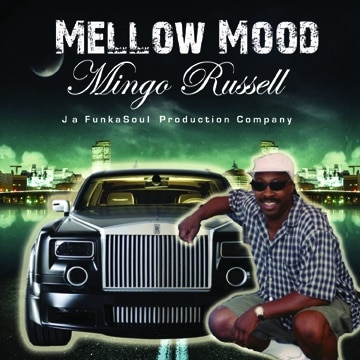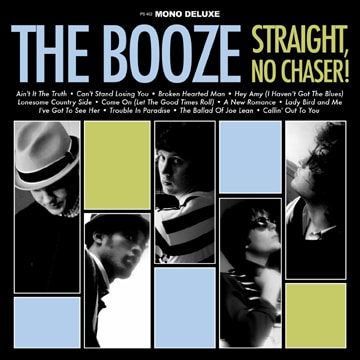Short Run CD Duplication
CALL US NOW FOR A FREE QUOTE
678-780-1722
🔥 SPECIALTY ITEMS 🔥
What is CD Duplication?
If you want to make thousands of copies of your CD without any playback problems, CD replication is the right choice for you. You will find that CD replication costs less than traditional CD pressing when you press more than 300 units. In addition, it saves you money because you will not have to pay for pressing costs every time you repress a disc. Read on to learn more. After all, CD duplication can save you a lot of time and money!
Glass master
The process of CD duplication begins with a glass master. A glass master is a polycarbonate plastic disc with a digital content on it. It is then stamped with the data from the glass master. Since the data is permanently pressed onto the glass, it can never be removed or added to. Once the glass master is stamped, it is metalized, goes through a quality control process, and gets a protective coating. This process is a highly efficient method of CD duplication.
The glass master is made in a clean room at a replication plant. It consists of a disc that is approximately 240mm in diameter and 6mm thick. Digital data is then etched on the disc and read by a CD player as ones and zeros. Some audiophiles insist that the glass master be created in real time for optimal audio quality. However, this process is more expensive than regular CD duplication.
While most artists opt to release their music digitally, many people still prefer to have a physical copy of their favorite songs. Physical CDs are also great to sell after a concert. In fact, many independent artists do not have the funds to afford CD replication, so it is best left to larger record labels. However, this process has some distinct advantages. By producing a glass master from an audio file, a CD-quality product can be produced.
A glass master is an ideal solution for CD duplication. It requires a polycarbonate base and a metallic reflective layer, while a CD-R replication is more affordable and takes less time. However, this method requires a glass master and formatting machines. It requires more time to create a master disc than duplication, but it is far more effective in copying data. This process is often used for small orders of a few hundred or more.
Polycarbonate plastic
The CD replication process involves the injection molding of polycarbonate plastic. The plastic is then colored green, plated with aluminum, and layered with a top coat to protect the content of the disc. The process is highly automated, and the cost per unit is often low, especially when the order is large enough to yield thousands of copies. Once the plastic is molded, the discs are cooled and the polycarbonate plastic undergoes quality control.
CDs are made of polycarbonate plastic, and weigh sixteen grams. The plastic is molded into a shape with a spiral track, which is used to store digital data. It also contains a layer of reflective aluminum or gold on the surface, which reflects lasers. CDs are also coated with a layer of lacquer, which protects the metal. CDs are also coated with labels, which can be offset or screen-printed.
CDs are generally made of polycarbonate plastic, and have two layers. On a CD, the polycarbonate plastic is sandwiched between an aluminum layer and a thin layer of polycarbonate. These plastics are made to last forever, but they do produce harmful gases in an incinerator. CDs should not be placed in curbside recycling bins. Even town-wide recycling bins don’t accept them.
Optical-grade polycarbonate is the most expensive, and it requires expensive DVD substrates. A disc manufactured with this material must be uniformly flat, and the film must have a high degree of “surface wiping” action. A polycarbonate disc made using this material must be fabricated using a 2P photopolymer process. The dual layer DVD format is the largest, and is the most difficult to manufacture. For this, it requires four stampers. Two of them are fitted onto standard DVD presses and are used to create pits in the polycarbonate film.
Stamper
CD duplication is the process of manufacturing copies of a CD or DVD. During the duplication process, a glass master (known as a single speed glass master) is loaded into a laser beam recorder. This laser etches an exact replica of the original CDR master, including the pits and grooves. Then, a red laser reads the data written on the glass substrate by adjusting its power and focus servos. Finally, the glass master is metallized with nickel and passes a visual inspection.
To create a CD or DVD, the glass master is a specialized tool. This stamper is made from glass with nickel-plated elements. The stamper is then placed into a CD/DVD injection molding machine and the melted poly carbonate is pressed into the mould. Once it is in place, the disc is finished by getting printed and UV varnish. This allows it to be played. Stamper for CD duplication is also a process called glass mastering.
Before CD duplication can begin, the table of contents must be created. In conventional CD premastering sessions, this process is known as premastering. Premastering is the process of creating another CD with premastered audio. This disc provides a work surface for the electroforming metal master. The data on the CD is then stamped onto it. It is important to note that a CD business card can hold 180MB of digital content. A custom CD business card is a unique way to market your business and attract customers. Coda, Inc. offers various sizes and shapes for mini discs.
When CD duplication is performed, the discs will hold the same amount of information, but they will be physically different. Discs will have a green, yellow, or purple bottom. The colored bottom is due to a dye layer. There are also discs that are colored with gold and silver. The gold version is a rarer version. Its cost depends on the amount of information that needs to be replicated.
Replication
CD replication services can help you with your CD marketing campaign. However, you must choose a company with high-quality replication capabilities. The right CD replication company should have cutting-edge infrastructure and can meet your quality requirements. It is also important to consider the cost of CD replication services and their timeframes for delivery. You can find a CD replication company in your city if you use the internet. It will be much easier to find one if you live in a metropolis.
Compared to duplication, replication is a cost-effective option for small and medium-sized-scale CD-ROM manufacturing. The cost per unit is lower for replication, but the lead time is much longer. Replication requires a higher minimum order than duplication. Some disc replication companies only accept orders of 500 or 1,000 CDs. However, it is worth considering for projects with a low-volume or long-term production schedule.
The process of CD duplication and replication is similar to that of making cookies. The difference between the two is that duplication requires a glass master, while replication involves using the original audio files to create individual CDs. The process is more time-consuming, but the results are often more durable. For example, a copy of a CD made by replication will feature a silver bottom and a more attractive blue/green tint.
Replication of CDs has a lot of benefits. Replication is ideal for small production runs, as it is cheaper and faster than manufacturing from scratch. It is also more cost-effective if you plan to sell many copies of a CD. The discs will be a high-quality product, and you will spend less money in the long run. So why wait? Consider CD duplication as an option for your CD replication project today!
Cost
There are many factors that contribute to the cost of CD duplication. The number of discs used to make duplicate copies affects the cost, as does the size of the order. There are several factors that can increase the price, including the size of the order, the turnaround time, shipping location, and packaging options. Experienced personnel and the latest technology also play a role in determining the final cost. Generally, CD duplication is a relatively cheap way to distribute content, but you should always speak with a company to get an accurate quote for your project.
Luckily, CD duplication doesn’t have to be expensive. Prices can start as low as $0.61 per disc, but if you’re planning to order more than a hundred copies, it can cost you a bit more. Whether you need a simple album with text on the cover or a complex project requiring full-color CD labels, the cost of CD duplication can range from $1.61 per disc for the most basic CDs to more than $1 per disc for high-quality, full-color CD labels.
CD duplication is an inexpensive way to create high volumes of CDs. Similar to DVD replication, it starts with a master file. Once the master file has been created, a CD duplication company can burn the data to multiple discs. While CD burners have been popular in PCs for decades, home machines are slowly moving away from them. Still, commercial companies use CD burners. There are three main costs involved in CD duplication.
CD duplication is also a cheap way to promote your music. With minimal costs, CDs are an affordable way to connect with fans, fill your pocket, and boost your career. CD duplication has become a popular option for short-run production. For example, if you’re launching a new album, you’ll probably find it most effective. And with the money you’ll save, it is a worthwhile option.
CD Duplication Headquarters:
Atlanta Disc 157 Burke St. Suite 108
Stockbridge,
GA 30281
678-780-1722
atlantadisc@aol.com












